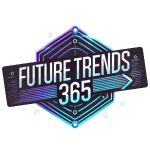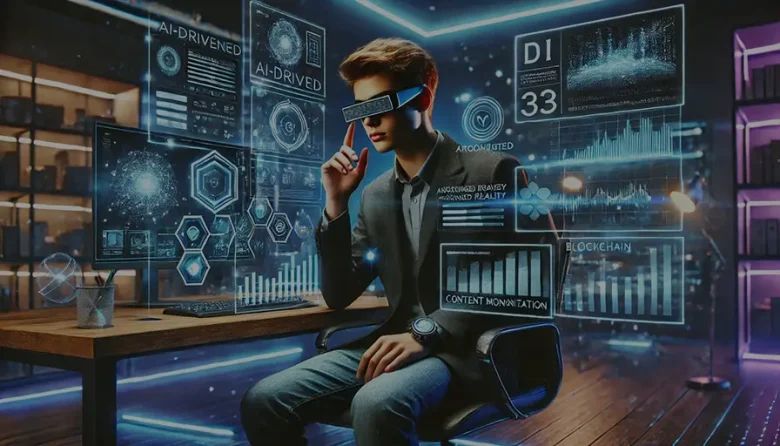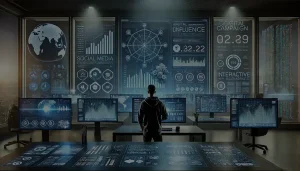Table of Contents
In the current scenario, digital transformation never ceases to amaze. Every day, new technologies reshape the environment and open up horizons for different segments, especially for those who make a living from content creation and digital influence. Influencers, who once dominated social media with engagement and creativity strategies, now have access to a new range of tools that promise to revolutionize their routines, expanding the possibilities for interaction and monetization. This article explores, in a comprehensive and in-depth way, how disruptive technologies are shaping the future of digital tools, offering valuable insights, real examples and studies of case to understand what to expect from the next generations in this dynamic universe.
Disruptive Technologies: Concepts and Importance in the Digital Universe
What are Disruptive Technologies?
Disruptive technologies are those that break with established paradigms, significantly altering the way activities are carried out and markets operate. Unlike incremental innovations, which gradually improve existing processes, disruptive technologies introduce radical changes, redefining practices and enabling the creation of new business models. In the context of digital influencers, this means the arrival of tools capable of transforming not only the production and consumption of content, but also the way of interacting with the public.
Impact on the Digital Market and Content Creation
The rise of disruptive technologies has played a key role in transforming the relationship between creators and their followers. With the increase in possibilities for personalization and interactivity, tools based on artificial intelligence, augmented reality and other innovations allow influencers to connect in a deeper and more authentic way with their audiences. This transformation results not only in new forms of engagement, but also in expanded opportunities for monetization and personal branding.
Evolution of Digital Tools for Influencers
Historically, digital influencers have relied on relatively simple tools to schedule posts, metrics analysis and content editing. Over the years, the advent of technologies such as artificial intelligence and big data analysis has begun to offer a range of resources that allow for extreme personalization of content and predictive analysis of follower behavior. This evolution has brought to light the need to rethink strategies and adopt new approaches to stand out in an increasingly competitive and dynamic market.
Key Future Trends and Tools
Artificial Intelligence and Machine Learning
THE artificial intelligence (AI) and machine learning are at the heart of the digital revolution. These technologies enable the analysis of large volumes of data in real time, offering insights into behaviors, preferences and trends. For example, platforms such as TikTok and Instagram use sophisticated algorithms to recommend content based on viewing and interaction history of users. This personalization not only increases engagement but also allows influencers to adjust their strategies based on predictive analytics.
Some practical applications of AI include:
- Content Recommendation: Algorithms can suggest topics and formats that resonate best with their audience. A fashion influencer, for example, can gain insights into what trends are trending, allowing them to create content that is more in line with their followers’ interests.
- Interaction Automation: Tools that automate responses on social media, optimizing the influencer's time and ensuring continuous communication with the public.
- Sentiment Analysis: Software that interprets follower feedback in real time, identifying possible crises or engagement opportunities.
Augmented Reality (AR) and Virtual Reality (VR)
Augmented reality and virtual reality are opening new frontiers for creating immersive experiences. These technologies allow influencers to deliver interactive and personalized content, elevating the level of audience engagement.
Real examples:
- Filters and Lenses: Snapchat and Instagram already offer AR tools that allow users to experiment with different visual and interactive effects. Brands and influencers are using these tools to create campaigns that go beyond static content, providing unique experiences.
- Virtual Events: VR platforms are enabling immersive events. Imagine an influencer organizing a product launch or a virtual meetup where attendees interact in a 3D environment, as if they were present at a real event.
This technology not only adds value to the user experience, but also positions itself as an essential tool to differentiate yourself in a saturated market.
Big Data and Predictive Analytics
With the massive amount of data generated daily on social networks, the use of big data becomes indispensable to understand patterns and trends. Predictive analytics tools use this data to identify opportunities and anticipate public behavior.
Practical applications:
- Trend Monitoring: Influencers can use platforms that analyze social media data to identify which topics are gaining relevance and, thus, adapt their content strategies.
- Audience Segmentation: Through big data analysis, it is possible to segment the audience more precisely, directing campaigns and content for specific groups with high engagement potential.
- Performance Measurement: Tools like Google Analytics 4 offer customized dashboards that help you track the performance of your posts, making decision-making easier. data-driven strategies real.
Blockchain and NFTs
Blockchain technology, known for its security and transparency, has been gaining ground in the digital universe through NFTs (non-fungible tokens). This innovation enables the creation of digital assets unique, offering new possibilities for monetization and content authentication.
Success stories:
- Exclusive Digital Collections: Influencers have been releasing NFT collections, allowing their followers to purchase exclusive pieces of content, such as videos, images and even music. These digital assets, in turn, can increase in value over time, creating new opportunities for investment and audience loyalty.
- Transparency and Authenticity: With blockchain technology, the authenticity of content is guaranteed, preventing fraud and guaranteeing the originality of digital works. This security is particularly valued in a market where trust is essential for the relationship between influencer and follower.
Internet of Things (IoT) and 5G Connectivity
The evolution of connectivity, especially with the expansion of 5G, is transforming the way influencers interact with their audiences. The Internet of Things (IoT) enhances this transformation by intelligently connecting devices and systems and integrated.
Practical impacts:
- Real-Time Content: 5G’s high speed and low latency enable high-quality live streaming, enabling more dynamic and real-time interactions. Influencers who work with live streaming, such as classes, events or Q&A sessions, directly benefit from this evolution.
- Device Integration: With IoT, it is possible to integrate various tools and devices during content creation. For example, smart cameras and automated lighting systems can be controlled remotely, optimizing production and ensuring a high-quality visual experience.
Implementation Strategies for Digital Influencers
Tool Evaluation and Platform Selection
Given the range of new technologies, choosing the right tools becomes a decisive factor for success. A careful assessment must consider several aspects, such as compatibility with the influencer's identity, engagement potential and return on investment.
Essential steps in choosing platforms:
- Set Goals: Before adopting a new tool, it is essential that the influencer has clear objectives, whether it is to increase interaction with the public, improve the quality of the content or diversify sources of income.
- Comparative Analysis: Compare different solutions available on the market. Research use cases, testimonials, and case studies to identify which technology best aligns with your needs.
- Tests and Experiments: There is no substitute for practice. Test new tools on small projects to assess their effectiveness before large-scale adoption.
Integration with Content Strategies
The incorporation of new technologies must occur organically and in line with the influencer’s identity and narrative. Advanced tools, such as those based on artificial intelligence, can be integrated into the creation process to offer more personalized and interactive content.
Integration examples:
- Digital Storytelling: By using augmented reality, influencers can create interactive stories that evolve as their audience interacts. For example, a product launch campaign could include unique filters that allow users to virtually try on the product.
- Automation and Personalization: AI can be used to suggest content themes and formats that align with audience preferences. This not only streamlines the creative process but also increases the likelihood of engagement and sharing.
- Collaborative Content Creation: Platforms that use big data allow for the analysis of trends and the identification of emerging topics. With this information, influencers can create collaborative content that directly addresses the demands and interests of their audience.
Monitoring and Analysis of Results
To ensure that new technologies are adding value, constant monitoring and detailed analysis of results are essential. The use of customized dashboards and specific metrics allows the influencer to adjust their strategies based on concrete data.
Aspects to be monitored:
- Audience Engagement: Analyzing metrics like likes, shares, comments, and watch time can provide valuable insights into the effectiveness of your content.
- Return on Investment (ROI): Identify which tools generate the greatest return in terms of audience growth and monetization.
- Qualitative Feedback: In addition to the numbers, direct feedback from followers – whether through polls or comments – helps to calibrate strategies and identify opportunities for improvement.
Success Stories and Lessons Learned
Several influencers have already reaped the rewards of integrating disruptive technologies into their routines. Case studies reveal how adopting new tools can transform engagement and open up new sources of revenue.
Example 1: Fashion Influencer and Augmented Reality
A renowned fashion influencer used augmented reality filters to launch a capsule collection. By allowing followers to virtually try on the looks through their smartphones, the creator not only increased engagement but also significantly boosted sales. This strategy demonstrated that innovation in the way content is presented can result in a more immersive and memorable experience for the audience.
Example 2: Using AI for Content Personalization
Another successful experiment involved using machine learning algorithms to recommend content based on followers’ behavior. An influencer in the technology segment implemented a tool that analyzed viewing patterns and suggested topics for videos and posts. The result was a significant improvement in the audience’s retention rate, which made the audience feel more identified with and engaged with the proposed content.
Example 3: Blockchain and NFTs in Digital Asset Creation
The adoption of blockchain to create NFTs has been gaining ground among influencers seeking new ways to monetize. A digital art influencer launched a series of NFTs that authenticated exclusive digitally produced works. The transparency and authenticity offered by blockchain technology not only ensured the security of transactions, but also created a new channel for interaction and loyalty among the public, who began to see NFTs as investments and collectibles.
Challenges and Future Perspectives
Barriers to the Adoption of New Technologies
Although disruptive technologies bring countless opportunities, their adoption is not without challenges. The main obstacles include:
- Implementation Costs: Purchasing and maintaining new tools can represent a significant investment, especially for influencers who are just starting out or operating on limited budgets.
- Learning Curve: Introducing innovative technologies requires time and dedication to master new tools, which can be challenging for professionals accustomed to traditional methods.
- Resistance to Change: Many influencers may feel insecure about innovations that require changes to their creative processes, fearing that technological complexity will affect the authenticity of their content.
Overcoming these challenges requires a gradual and well-planned approach, in which testing and training are essential to adapt to new technological demands.
The Importance of Strategic Partnerships
One effective way to mitigate the challenges mentioned above is through strategic partnerships. Collaborations between influencers and startups or companies specializing in technology can accelerate the adaptation process and provide technical and strategic support. These partnerships allow:
- Access to Expertise: Specialized professionals can assist with the integration of new tools, ensuring that the influencer makes the most of the features offered.
- Cost Sharing: Investing in disruptive technologies can be costly. Partnerships can facilitate access to more advanced solutions through collaborative agreements, reducing individual costs.
- Joint Innovation: By joining forces, influencers and developers can create customized solutions that meet the specific needs of the digital market, driving innovations that benefit the entire industry.
Predictions for the Coming Years
The digital tools landscape for influencers is constantly evolving and promises even more profound changes in the coming years. Some predictions point to:
- Greater Personalization and Interactivity: With the advancement of artificial intelligence, content will be increasingly adapted to the individual profile of followers, providing personalized and interactive experiences.
- Immersive Content Expansion: Augmented and virtual reality should become even more integrated into influencers' routines, allowing the creation of virtual environments and unprecedented content consumption experiences.
- New Forms of Monetization: Technologies such as blockchain and NFTs should pave the way for innovative monetization models, where authenticity and exclusivity of content transform into valuable digital assets.
- Device Convergence: With the expansion of 5G and IoT, integration between different devices and platforms will intensify, allowing audiences to interact more fluidly and continuously with content, whether through live broadcasts, virtual events or personalized interactions in real time.
These predictions point to a future where creativity and innovation will be the main differentiators for influencers who want to stand out in an increasingly competitive market.
Final Reflections and Considerations for the Future
Digital transformation, driven by disruptive technologies, is redefining the landscape for digital influencers. New tools not only enhance the ability to create richer, more interactive content, but also offer new ways to monetize and build audience loyalty. Through technologies such as artificial intelligence, augmented reality, big data, blockchain, and advanced 5G connectivity, influencers have at their disposal an arsenal of resources that enable them to innovate and adapt to market changes.
Each technology discussed in this article comes with an accompanying from real examples and studies case studies that demonstrate their practical application and the results achieved. Whether through the extreme personalization provided by AI, the immersion generated by AR and VR, or the security and authenticity offered by blockchain, disruptive tools represent a significant evolution for professionals who want to remain relevant and engaged with their audience.
When facing the challenges inherent in adopting these technologies, it is essential that influencers invest in strategic partnerships, training, and practical testing. This gradual, data-driven approach will ensure not only efficient implementation, but also the creation of content that truly resonates with the demands and expectations of followers.
The path to the future is full of opportunities and innovations. Those who adapt and creatively explore new technologies will have a considerable competitive advantage, being able to transform challenges into true levers of growth and success. In an environment where rapid change demands constant updating and adaptation, the ability to innovate and embrace the new becomes a crucial differentiator.
The digital revolution is already underway, and with each new tool that emerges, a universe of possibilities opens up for the creation of unique and memorable experiences. The future of digital influencers is closely linked to the ability to understand and integrate these innovations, building a trajectory based on creativity, authenticity and commitment to excellence in communication.

Lucas Almeida is a digital marketing and innovation specialist, focusing on technology trends and strategies for influencers. With a degree in Business Administration and an MBA in Marketing, Lucas combines market insights with a practical approach, offering accessible analysis and content for entrepreneurs, content creators and professionals seeking constant evolution in the digital landscape.




